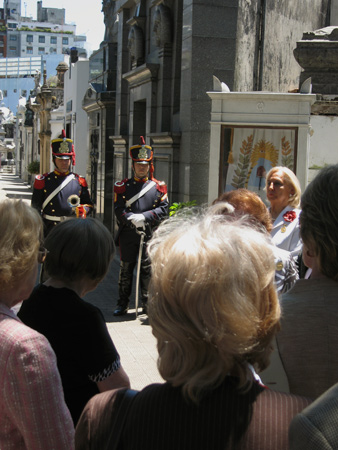
Most cloudy days are still sufficiently bright enough to illuminate stained glass windows. Don’t forget to peek inside.

Most cloudy days are still sufficiently bright enough to illuminate stained glass windows. Don’t forget to peek inside.
Time for a little revisionist history.
When asked, most Argentines would say that President Roque Sáenz Peña made universal male suffrage national law in 1912. Without a doubt it was his administration that passed the law, but Roque Sáenz Peña died while in office, supposedly from diabetes. As Vice-President, Victorino de la Plaza inherited the difficult job of making sure the new electoral system would be honored. If he had caved in to pressure from the elite & not complied with the new law, Argentine history would be very different today.
Victorino de la Plaza grew up in poverty in the northern province of Salta but always did well in school. So well that he managed to obtain free education in the best schools in the country. He worked in the law office of Vélez Sarfield as an assistant during the writing of Argentina’s civil code, but he actually contributed much more than his title implied. De la Plaza first met Roque Sáenz Peña in that law office, & they remained friends for a lifetime. After fighting in the war with Paraguay, the costs for his education were waived since he was one of the best in his class.
From that moment, De la Plaza’s political career took off. He was appointed to several positions in both educational institutions, provincial & national government (including representative of his native Salta in Congress) & later a number of important foreign ministry & economic positions. De la Plaza spent 21 years in London, promoting Argentina every chance he could. While in the UK, he obtained important railroad investment & debt restructuring which helped Argentina become one of most modern nations in Latin America by the beginning of the 20th century.
Soon after returning to Argentina in 1907, Victorino de la Plaza ran as Vice-President on the Roque Sáenz Peña ticket. Sáenz Peña was in office from 1910 to 1914; De la Plaza completed the last 2 years of the 6-year term after the President passed away. Thanks to De la Plaza’s ability as a statesman, Argentina maintained neutrality throughout WWI & universal male suffrage successfully began in 1916.
But where is he? Multiple sources claim that he is buried in Recoleta Cemetery, but I’ve yet to see definitive proof. An old city government handout puts him near Marcelina Alen de Yrigoyen. Her tomb is pictured below. No plaque belongs to him there & the neighboring mausoleum is empty & undergoing repairs (note the scaffolding on the left):
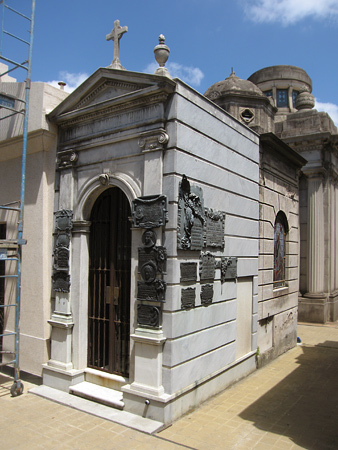
Surely they wouldn’t disturb a President. A few tombs away is Victorino’s brother with a “De la Plaza y Castañeda Vega” nameplate (pix below). No Argentine flag is inside so Victorino is MIA. Any info would be appreciated:
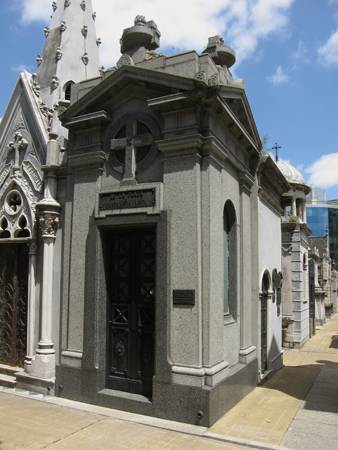
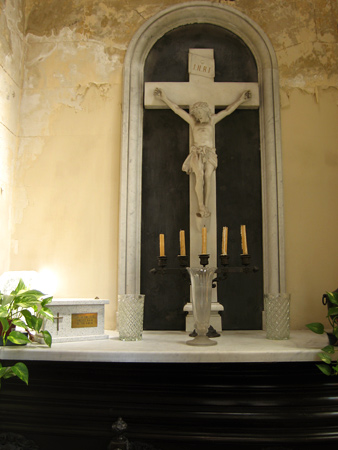
Update: Mystery solved in January 2008.
Leave a CommentBudget Travel magazine (published by Frommer’s) highlights Buenos Aires in their latest edition.

Among their suggestions for activities while in town is a visit to Recoleta Cemetery… & to buy a map from me. I couldn’t agree more 🙂
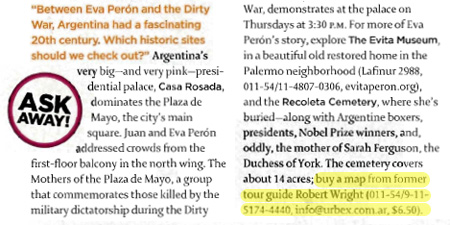
For more info, click on the “walking tour map” link in the left sidebar. Thanks to all those who have already purchased a map… proceeds help keep this blog going!
2 CommentsSometimes it doesn’t matter if you lie down in the middle of the central walkway… as long as there’s a little bit of shade to relax in:
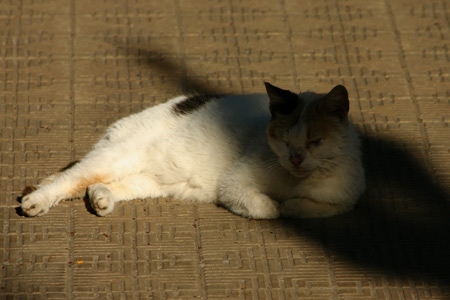
With so many important people buried in one place, almost every day can be a special one. There’s no way to keep track of what might be happening in Recoleta Cemetery… the city or national government needs to start an official blog to announce burials & special commemorative events that take place. Like today.
I was wandering around taking photos for this blog when I heard a few trumpets play a funeral march. I went—along with hordes of tourists—in the direction of the music to see what was going on.
A small group of mostly women had gathered near the center of the cemetery along with a few Granaderos… an army regiment formed by San Martín during the independence wars. They now exist as mainly an honor guard & still sport the original uniforms. As I got closer, one woman was reading a biography which eloquently praised Remedios de Escalada, wife of San Martín. She’s buried by the only Granadero standing in the shade:
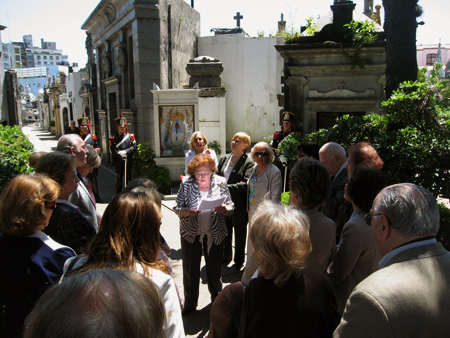
The whole process took 15 minutes but the women had gathered to pay tribute to the wife of Argentina’s founding father on her birthday. She was born on November 20, 1797. I hope someone remembers my birthday 200 years from now!
